Serving 454 students in grades Kindergarten-6, Johnson Park Elementary School ranks in the bottom 50% of all schools in California for overall test scores (math proficiency is bottom 50%, and reading proficiency is bottom 50%).
The percentage of students achieving proficiency in math is 18% (which is lower than the California state average of 33%). The percentage of students achieving proficiency in reading/language arts is 31% (which is lower than the California state average of 47%).
The student:teacher ratio of 24:1 is higher than the California state level of 21:1.
Minority enrollment is 82% of the student body (majority Hispanic), which is higher than the California state average of 80% (majority Hispanic).
Quick Stats (2025)
- Grades: Kindergarten-6
- Enrollment: 454 students
- Student:Teacher Ratio: 24:1
- Minority Enrollment: 82%
- Overall Testing Rank: Bottom 50% in CA
- Math Proficiency: 18% (Btm 50%)
- Reading Proficiency: 31% (Btm 50%)
- Science Proficiency: 30-39% (Top 50%)
- Source: National Center for Education Statistics (NCES), CA Dept. of Education
School Overview
Johnson Park Elementary School's student population of 454 students has grown by 15% over five school years.
The teacher population of 19 teachers has grown by 11% over five school years.
Grades Offered
Grades Kindergarten-6
Total Students
454 students
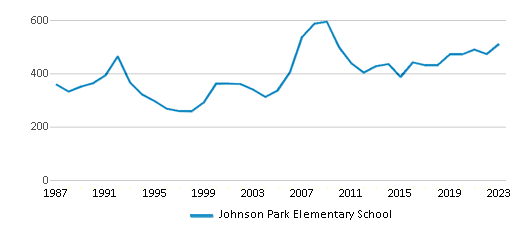
Gender %
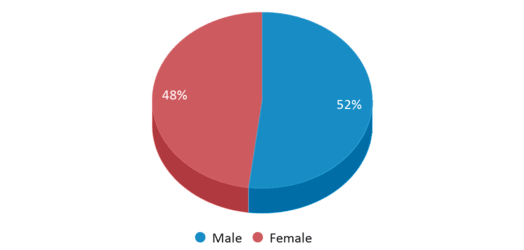
Total Classroom Teachers
19 teachers
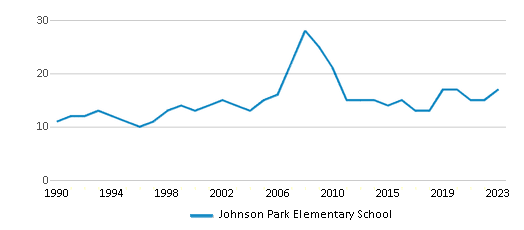
Students by Grade
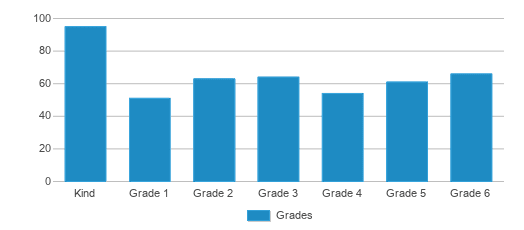
School Calendar
School Rankings
Johnson Park Elementary School ranks within the bottom 50% of all 9,602 schools in California (based off of combined math and reading proficiency testing data).
The diversity score of Johnson Park Elementary School is 0.62, which is less than the diversity score at state average of 0.63. The school's diversity has stayed relatively flat over five school years.
Overall Testing Rank
#6937 out of 9602 schools
(Bottom 50%)
(Bottom 50%)
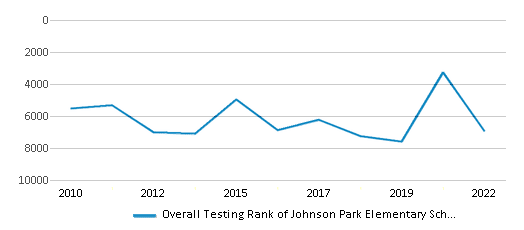
Math Test Scores (% Proficient)
18%
33%
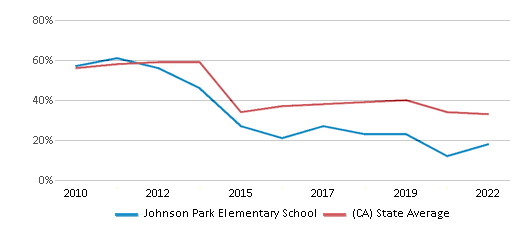
Reading/Language Arts Test Scores (% Proficient)
31%
47%
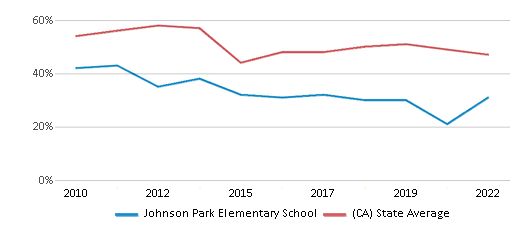
Science Test Scores (% Proficient)
30-39%
29%
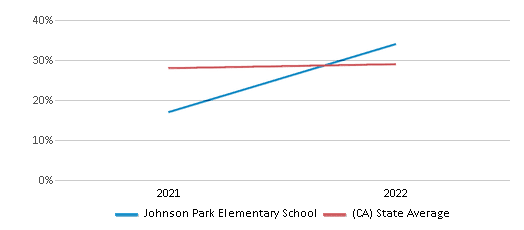
Student : Teacher Ratio
24:1
21:1
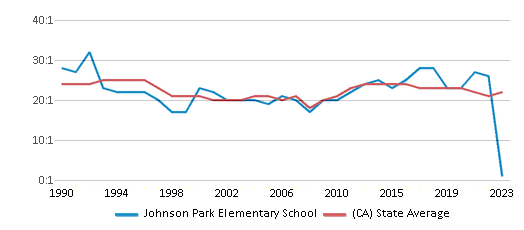
American Indian
1%
1%
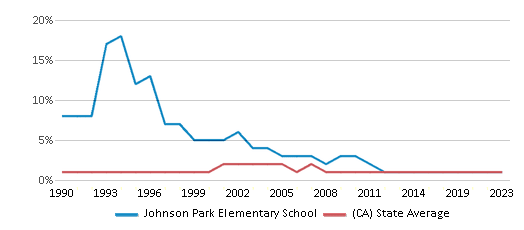
Asian
9%
12%
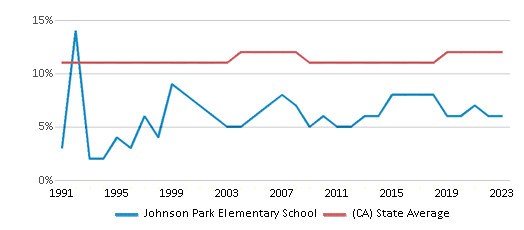
Hispanic
58%
56%
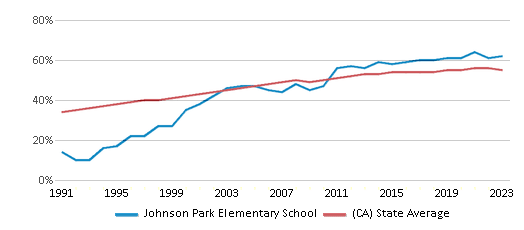
Black
5%
5%
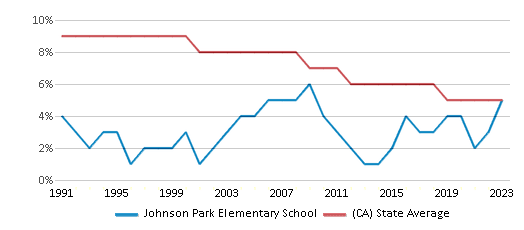
White
18%
20%
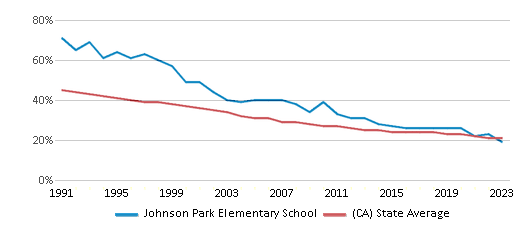
Hawaiian
2%
n/a
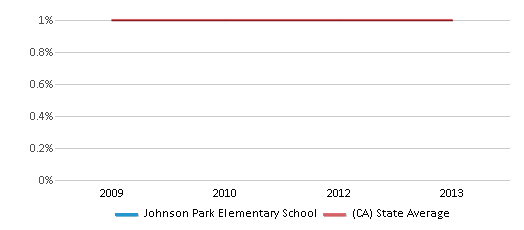
Two or more races
7%
6%
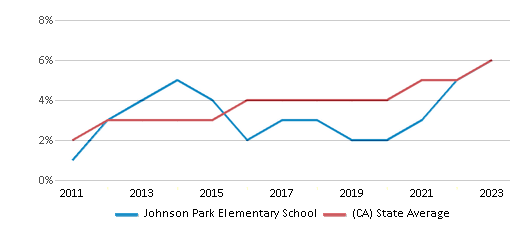
All Ethnic Groups
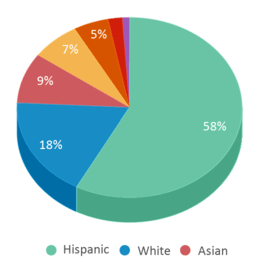
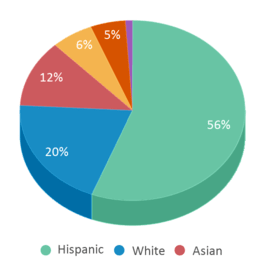

Eligible for Free Lunch
70%
54%

Eligible for Reduced Lunch
3%
8%
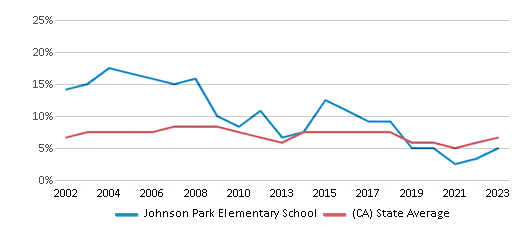
School Statewide Testing
School District Name
Source: National Center for Education Statistics (NCES), CA Dept. of Education
Profile last updated: 02/09/2025
Frequently Asked Questions
What is Johnson Park Elementary School's ranking?
Johnson Park Elementary School is ranked #6937 out of 9,602 schools, which ranks it among the bottom 50% of public schools in California.
What percent of students have achieved state testing proficiency in math and reading?
18% of students have achieved math proficiency (compared to the 33% CA state average), while 31% of students have achieved reading proficiency (compared to the 47% CA state average).
How many students attend Johnson Park Elementary School?
454 students attend Johnson Park Elementary School.
What is the racial composition of the student body?
58% of Johnson Park Elementary School students are Hispanic, 18% of students are White, 9% of students are Asian, 7% of students are Two or more races, 5% of students are Black, 2% of students are Hawaiian, and 1% of students are American Indian.
What is the student:teacher ratio of Johnson Park Elementary School?
Johnson Park Elementary School has a student ration of 24:1, which is higher than the California state average of 21:1.
What grades does Johnson Park Elementary School offer ?
Johnson Park Elementary School offers enrollment in grades Kindergarten-6
What school district is Johnson Park Elementary School part of?
Johnson Park Elementary School is part of Marysville Joint Unified School District.
School Reviews
5 8/12/2018
My son's teacher is loving and caring.
2 5/12/2014
My kids I have been going there for 6 years and in very sad too say that they have no feelings for their students my daughter got in trouble right at then end of the school year April 29 which leaves about. 4 weeks of school left instead of suspending her for two day like the rest of the girls they would rather kick her out and send her too Yuba city school where we just moved too so now she can't even go with her fellow class mates on their last days of school field trips so now her days of memories of elementary school are going too be ruined and pretty much sad for her.It's already hard enough for her with us moving in all so we was going too sign her up in Yuba city for the new school year coming up.And for my two other children that went their my son always was being picked on by the janitor and principle.And my son hated it their and my other daughter really didn't care for that school.but now my daughter can not graduate with her friends and say goodbye too every one.she really don't want too go to school anywhere she is really bummed out.now I see way kids drop out at such a young age.
Review Johnson Park Elementary School. Reviews should be a few sentences in length. Please include any comments on:
- Quality of academic programs, teachers, and facilities
- Availability of music, art, sports and other extracurricular activities
Recent Articles

What Is A Charter School?
Explore the world of charter schools in this comprehensive guide. Learn about their history, how they operate, and the pros and cons of this educational innovation. Discover key facts about charter schools, including admission policies, demographics, and funding, as well as what to look for when considering a charter school for your child.

10 Reasons Why High School Sports Benefit Students
Discover the 10 compelling reasons why high school sports are beneficial for students. This comprehensive article explores how athletics enhance academic performance, foster personal growth, and develop crucial life skills. From improved fitness and time management to leadership development and community representation, learn why participating in high school sports can be a game-changer for students' overall success and well-being.

February 05, 2025
Understanding the U.S. Department of Education: Structure, Impact, and EvolutionWe explore how the Department of Education shapes American education, from its cabinet-level leadership to its impact on millions of students, written for general audiences seeking clarity on this vital institution.









